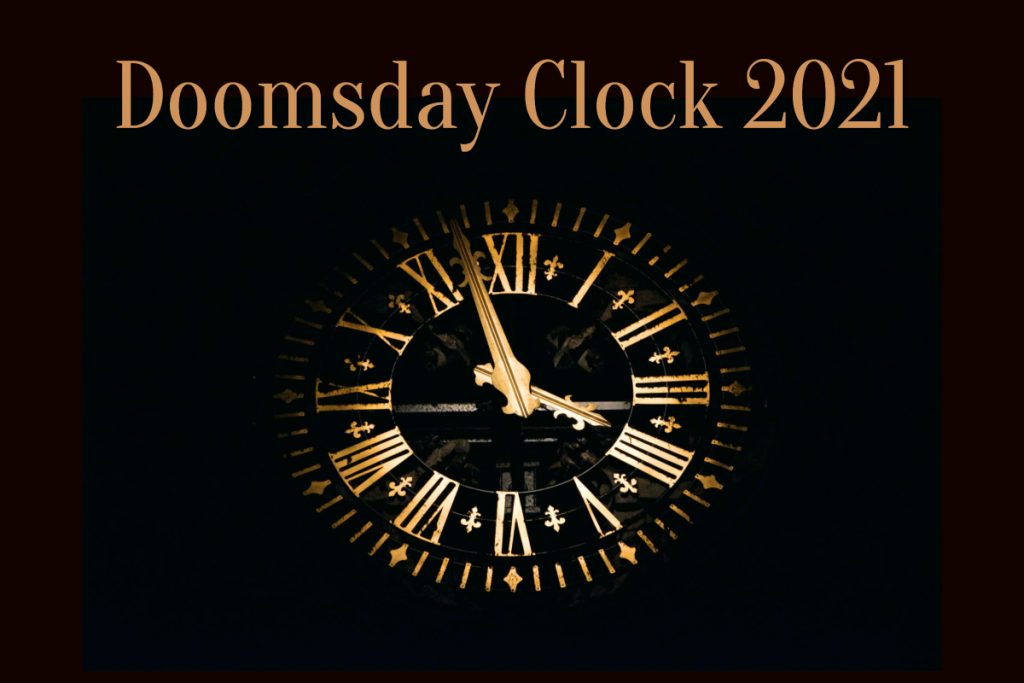The Doomsday Clock is updating again for 2021. Experts will once again predict if we’re closer to the end of the world. Between climate change, the pandemic that is now spawning new variants, wildfires that feel like they are increasing every year, and alien discoveries, we’re all a little nervous about what the clock will predict this time around. You can watch the Doomsday Clock announcement live in this article.
Watch the Doomsday Clock's time change LIVE right here. Share on XWatch the Doomsday Clock Live Below
On Wednesday morning, January 27, at 10 a.m. Eastern (9 a.m. Central/7 a.m. Pacific or 3 p.m. in the UK/1500 GMT), the Doomsday Clock is going to give an all-new prediction for just how close our world is to midnight. You can watch the prediction right here. If the video below doesn’t work for any reason, just watch live by going here.
The clock is one method of trying to determine just how close we are to the end of the world. The Bulletin of Atomic Scientists moves the clock forward or backward depending on what’s going on in the world at the time.
In 2020, the clock moved to 100 seconds to midnight, which was the closest it’s been to midnight in history.
According to the Bulletin of Atomic Scientists, the speakers at today’s event will include:
- Former California Governor Jerry Brown, executive chair, Bulletin of the Atomic Scientists;
- President Ellen Johnson Sirleaf, co-chair, WHO Independent Panel for Pandemic Preparedness and Response, Nobel Peace Prize recipient, former President of Liberia, and member, The Elders;
- Hiroshima Governor Hidehiko Yuzaki, Japan;
- Dr. Rachel Bronson, president and CEO, Bulletin of the Atomic Scientists;
- Dr. Asha George, executive director, Bipartisan Commission on Biodefense, and Science and Security Board member, Bulletin of the Atomic Scientists;
- Dr. Susan Solomon, Lee and Geraldine Martin Professor of Environmental Studies at the Massachusetts Institute of Technology (MIT), founding director, MIT Environmental Solutions Initiative, and Science and Security Board member, Bulletin of the Atomic Scientists; and
- Dr. Steve Fetter, associate provost, dean of the graduate school and professor of public policy, University of Maryland, and Science and Security Board member, Bulletin of the Atomic Scientists.
What Is the Doomsday Clock?
According to the Bulletin of Atomic Scientists’ website:
The Doomsday Clock is a design that warns the public about how close we are to destroying our world with dangerous technologies of our own making. It is a metaphor, a reminder of the perils we must address if we are to survive on the planet.
When the Doomsday Clock was created in 1947, the greatest danger to humanity came from nuclear weapons, in particular from the prospect that the United States and the Soviet Union were headed for a nuclear arms race. The Bulletin considered possible catastrophic disruptions from climate change in its hand-setting deliberations for the first time in 2007.
The website also notes that “the Bulletin’s Science and Security Board took over the responsibility (of changing the clock’s hands) and has since met twice a year to discuss world events and reset the clock as necessary. The board is made up of scientists and other experts with deep knowledge of nuclear technology and climate science, who often provide expert advice to governments and international agencies. They consult widely with their colleagues across a range of disciplines and also seek the views of the Bulletin’s Board of Sponsors, which includes 13 Nobel Laureates.”
The hands were the farthest from midnight in 1991 when the Cold War ended and the U.S. and Soviet Union signed a Strategic Arms Reduction Treaty.


Leave a Reply